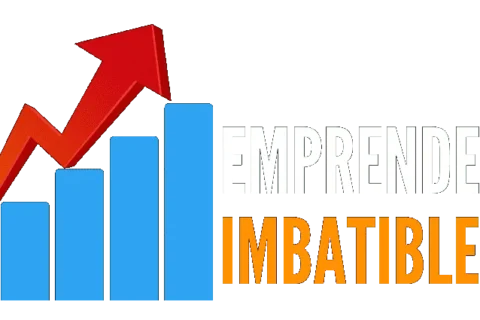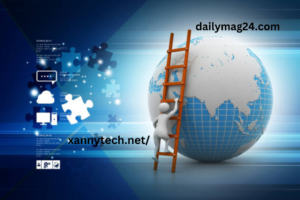Introduction to 2023-1954
The period spanning from 2023-1954 encapsulates a remarkable journey of transformation, reflecting the profound shifts in technology, society, culture, and global dynamics. This article delves into the stark contrasts between these two years, exploring how the world transitioned from the post-war era of 1954—marked by traditional values, burgeoning technological innovations, and the early stages of the Cold War—to the hyper-connected, digital society of 2023. It highlights the evolution of social norms, the exponential growth of technology, the shifting economic landscape, and the rise of environmental consciousness, offering a comprehensive comparison that underscores the significant changes shaping our world across nearly seven decades.
The Post-War World of 1954
In 1954, the world was emerging from the shadows of World War II. The war had ended nearly a decade earlier, but its impact was still deeply felt across the globe. The 1950s were characterized by a strong desire for stability, growth, and peace, as nations focused on rebuilding and re-establishing their economies and societies. The world was in the midst of the Cold War, with tensions between the United States and the Soviet Union shaping global politics.
Social and Cultural Landscape in 1954
The social fabric of 1954 was marked by traditional values, with a strong emphasis on family, religion, and community. In the United States, the “baby boom” was in full swing, leading to a significant increase in population. This era was also the height of suburbanization, with families moving out of cities and into newly built suburban neighborhoods. Television was becoming a central part of American life, bringing entertainment and news into homes across the country.
In Europe, the scars of World War II were still visible, but there was also a sense of optimism and renewal. The European Recovery Program, commonly known as the Marshall Plan, had helped to rebuild economies and infrastructure. The rise of the welfare state in many Western European countries provided citizens with new social safety nets, including healthcare, education, and unemployment benefits.
Technological Advances in 1954
Technological innovation was also on the rise in 1954, although it was a far cry from the digital revolution we see today. The development of the transistor in the late 1940s had paved the way for smaller, more reliable electronic devices. The first commercial computers, such as the IBM 701, were introduced in the early 1950s, marking the beginning of the computer age.
However, technology in 1954 was still largely analog, and many of the conveniences we take for granted today, such as the internet, smartphones, and personal computers, were decades away from becoming a reality. The automotive industry was booming, with cars becoming more affordable and accessible to the average family.
The Hyper-Connected World of 2023
Fast forward to 2023, and the world looks vastly different. The technological advancements that have taken place over the past 69 years are nothing short of revolutionary. The digital age has transformed every aspect of life, from how we work and communicate to how we entertain ourselves and interact with the world around us.
Social and Cultural Shifts in 2023
The social landscape of 2023 is characterized by diversity, inclusivity, and rapid change. The traditional values of the 1950s have given way to a more dynamic and fluid society, where individuals have greater freedom to define their identities and lifestyles. The rise of social media has created new forms of communication and community, connecting people across the globe in ways that were unimaginable in 1954.
The internet has democratized access to information and creative expression, allowing individuals to share their work with a global audience. However, this hyper-connected world also comes with challenges, including concerns about privacy, misinformation, and the impact of digital technology on mental health.
Technological Innovations in 2023
The technological advancements of 2023 are a stark contrast to those of 1954. The digital revolution has brought us the internet, smartphones, artificial intelligence, and advanced robotics. These technologies have transformed industries, created new forms of work, and reshaped our daily lives.
One of the most significant technological trends of 2023 is the rise of artificial intelligence (AI) and machine learning. Autonomous vehicles are becoming more common, with companies like Tesla leading the way in the development of self-driving cars.
The internet has become an essential part of life in 2023, with nearly 5 billion people around the world connected online. Social media platforms like Facebook, Twitter, and Instagram have become central to how we communicate and share information. The rise of streaming services has revolutionized the entertainment industry, allowing people to access movies, TV shows, and music on demand.
Economic Transformations from 1954 to 2023
The global economy has undergone significant transformations between 1954 and 2023. In the 1950s, the economy was characterized by industrialization and mass production, with manufacturing playing a central role in economic growth. The post-war boom led to increased consumer spending, rising living standards, and the growth of the middle class.
The rise of the digital economy has created new industries and transformed existing ones. E-commerce has revolutionized retail, with companies like Amazon dominating the market. The gig economy has emerged as a new form of employment, with people working as freelancers or independent contractors in fields ranging from ride-sharing to graphic design.
Globalization and Economic Shifts
Globalization has also played a significant role in shaping the economy between 1954 and 2023. However, over the decades, globalization has led to the integration of economies around the world, with trade, investment, and migration increasing significantly.
This has led to both opportunities and challenges. On the one hand, globalization has spurred economic growth and development, lifting millions of people out of poverty and creating new markets for goods and services. On the other hand, it has also led to increased inequality, with some regions and communities benefiting more than others.
Political and Environmental Changes: A 1954 to 2023 Comparison
The political landscape of 2023 is vastly different from that of 1954. The Cold War, which dominated global politics in the 1950s, has long since ended, giving way to new geopolitical dynamics. The rise of China as a global superpower, the resurgence of nationalism, and the challenges of climate change are among the key issues shaping politics in 2023.
Environmental Awareness and Challenges
One of the most significant changes between 1954 and 2023 is the growing awareness of environmental issues. In the 1950s, environmental concerns were largely absent from public discourse. However, as industrialization and urbanization have progressed, the impact of human activity on the environment has become increasingly evident.
By 2023, climate change is one of the most pressing global challenges. Governments, businesses, and individuals are grappling with the need to reduce carbon emissions, transition to renewable energy, and protect natural ecosystems.
Conclusion
The comparison between 1954 and 2023 highlights the remarkable changes that have taken place over nearly seven decades. As we reflect on the changes from 1954 to 2023, it’s clear that the world will keep evolving. Innovation, culture, and politics shape this evolution. The lessons of the past can guide us through today’s complexities. We must strive to create a future that is advanced, just, sustainable, and inclusive.
Also Read: White Tea Shot: A Comprehensive Guide
FAQs
What were the major differences in technology between 1954 and 2023?
In 1954, technology was primarily analog, with early developments in transistors and computers. By 2023, digital technology has revolutionized society, with advancements in AI, the internet, and autonomous vehicles.
How did social values change from 1954 to 2023?
Social values in 1954 were more traditional, focusing on family, religion, and community. By 2023, society has become more diverse and inclusive, with a greater emphasis on individual freedom and global connectivity.
What were the environmental concerns in 1954 compared to 2023?
Environmental concerns were minimal in 1954, but by 2023, climate change and sustainability have become major global issues, driving policy and technological innovation.
How did political dynamics change from 1954 to 2023?
The Cold War dominated politics in 1954, while by 2023, the world has seen the rise of new superpowers, increased nationalism, and the growing influence of environmental and technological issues.
What cultural shifts occurred between 1954 and 2023?
Cultural shifts include the move from traditional, localized cultures in 1954 to a more global, interconnected culture in 2023, influenced by the internet, social media, and global migration.












